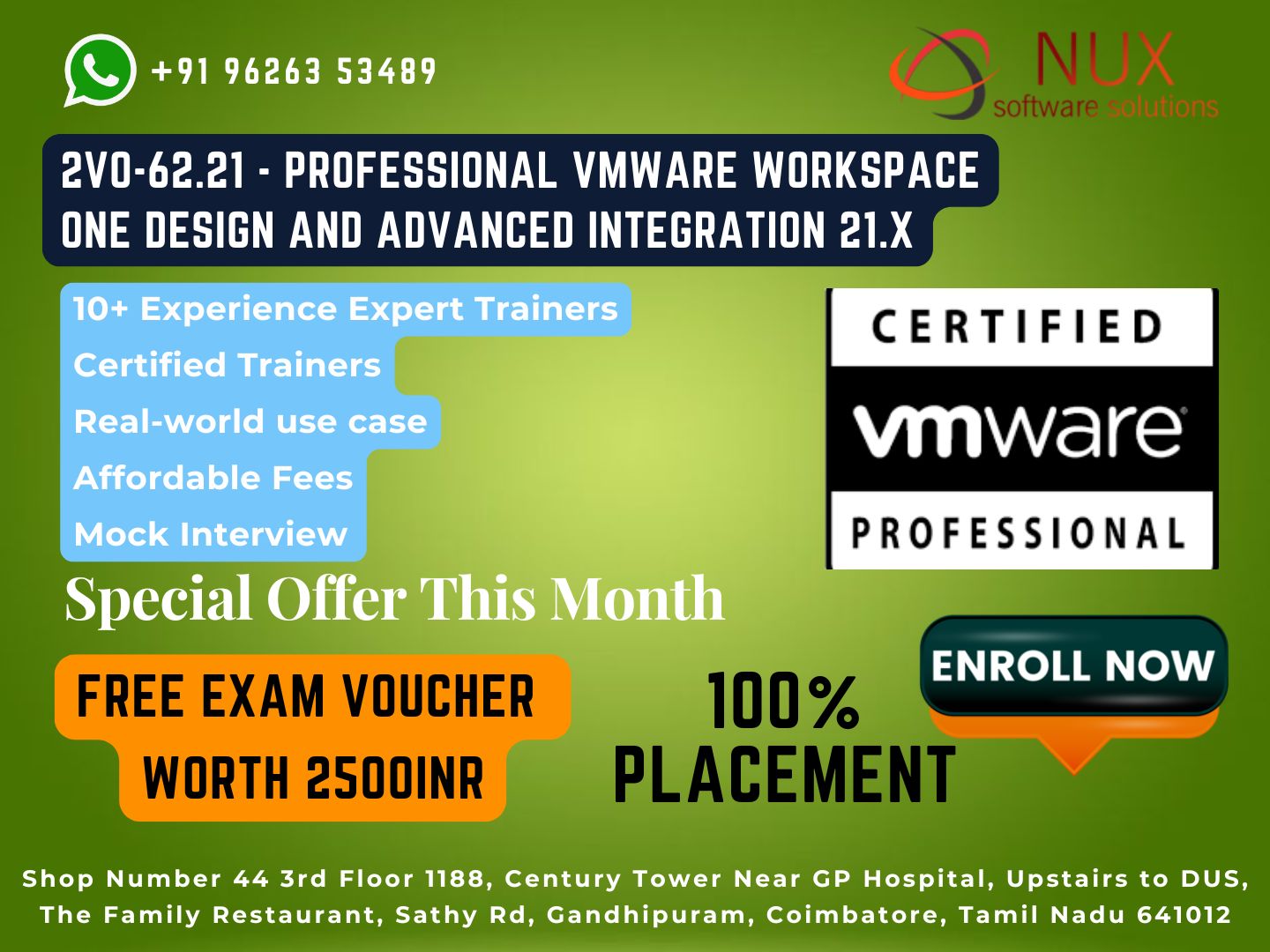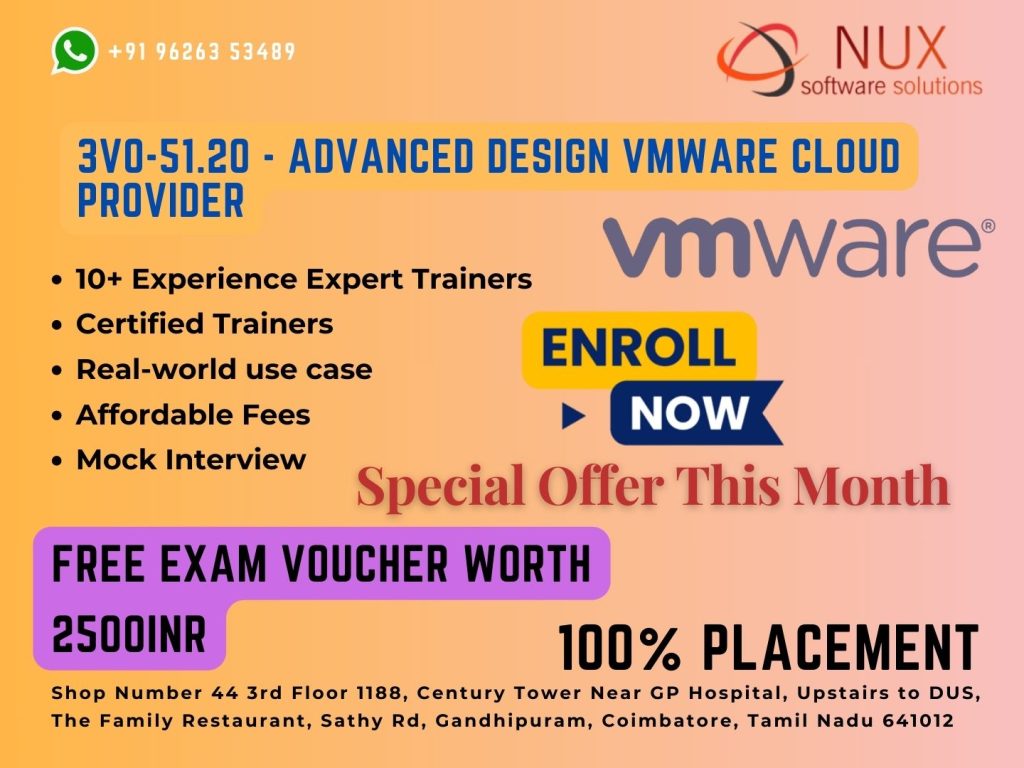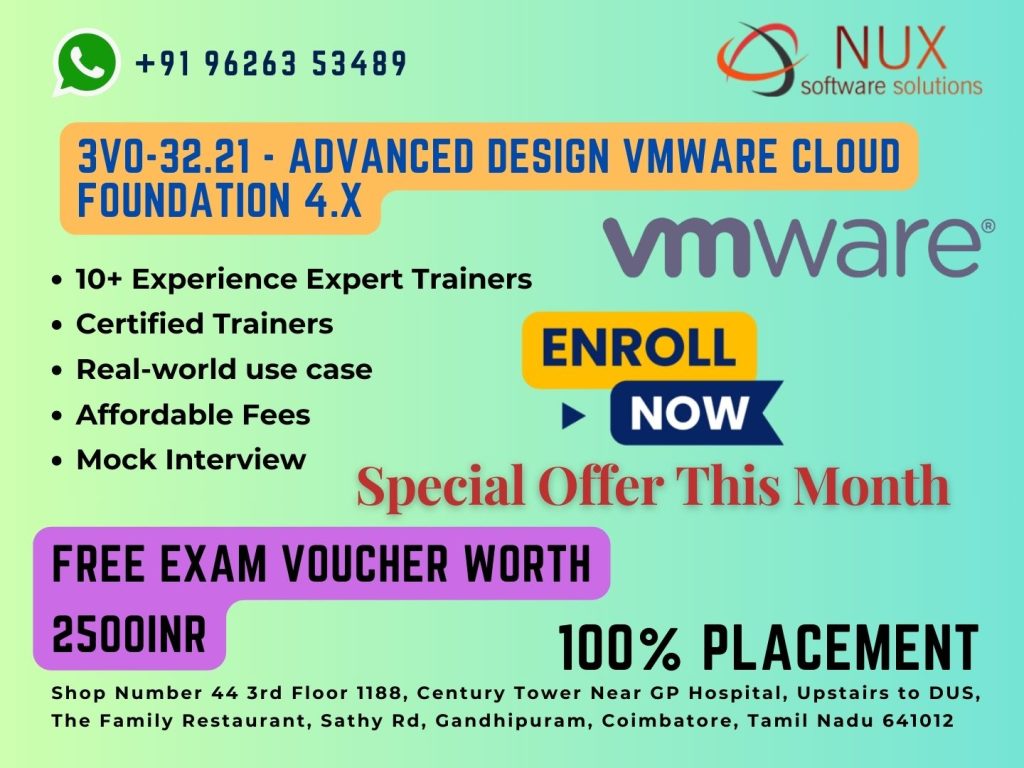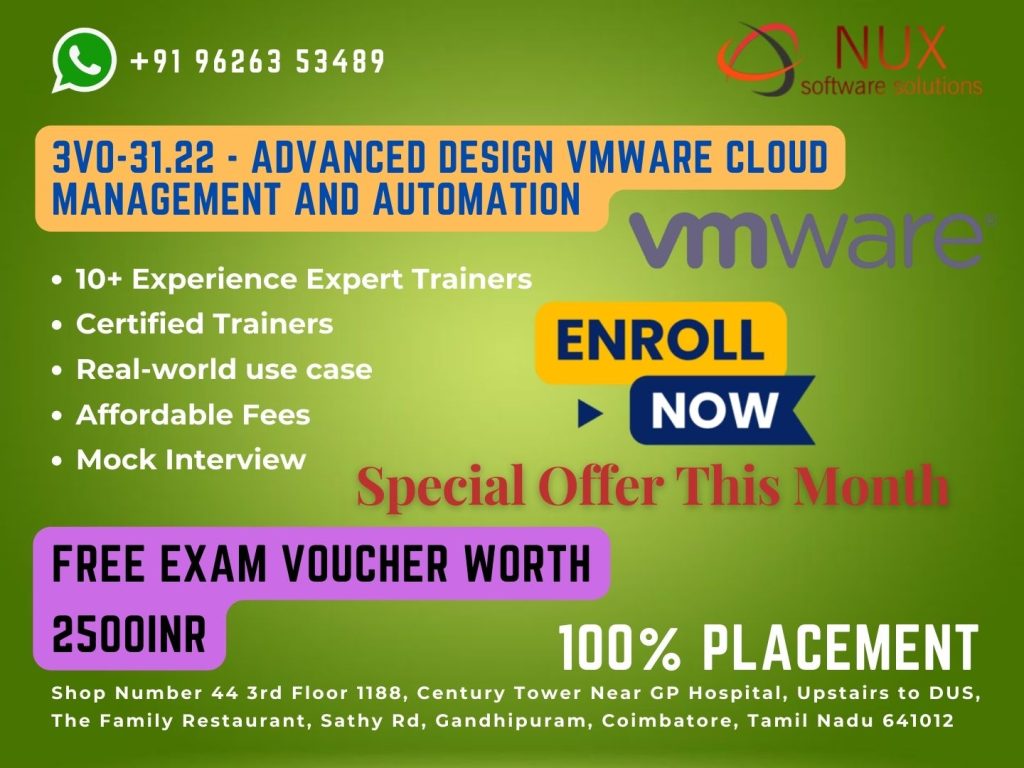Professional VMware Workspace ONE Design and Advanced Integration 21.x Training and Certification

Course Overview
This advanced training program focuses on the design principles, architecture, and integration techniques required to build and manage enterprise-grade VMware Workspace ONE environments. The course prepares professionals to tackle real-world scenarios involving secure access, device management, identity federation, and third-party system integration.
Participants will gain hands-on experience in advanced enterprise mobility architecture, SAML-based SSO, conditional access, multi-tenancy, and integration with Active Directory, Azure AD, Okta, and other platforms. The course also prepares learners for the Professional VMware Workspace ONE Design and Advanced Integration [21.x] certification exam.
Why Choose This Course
Develop expertise in advanced deployment and design strategies for Workspace ONE
Understand how to integrate Workspace ONE UEM and Access with identity providers and enterprise services
Learn to secure and scale Workspace ONE across multi-site and hybrid environments
Gain in-demand skills for enterprise mobility architecture, zero trust access, and identity management
Prepare confidently for the VMware Professional Advanced Integration certification exam
Who Should Enroll
VMware Workspace ONE administrators and solution architects
IT consultants specializing in enterprise mobility and identity solutions
System integrators responsible for large-scale Workspace ONE deployments
Enterprise security and access control specialists
Professionals pursuing the VMware Advanced Integration certification
Skills You Will Gain
Designing highly available and scalable Workspace ONE architectures
Configuring and integrating Workspace ONE Access with external IdPs and directories
Implementing certificate-based authentication, SSO, and conditional access policies
Designing secure workflows for mobile device onboarding, compliance, and policy enforcement
Building and maintaining custom connectors, API integrations, and multi-tenant solutions
Troubleshooting and optimizing enterprise deployments using VMware best practices
Career Opportunities
VMware Workspace ONE Solution Architect
Enterprise Mobility Engineer
Digital Workspace Consultant
Security and Identity Integration Specialist
VMware Certified Professional – Workspace ONE Advanced Integrator
This training is highly applicable in banking, healthcare, telecom, education, and global enterprises adopting zero trust architecture, remote work enablement, and cloud-first mobility strategies.
Design Smarter, Integrate Seamlessly, and Secure Endpoints at Scale
This course provides the deep technical expertise needed to lead complex Workspace ONE deployments and integrations that meet modern enterprise security and mobility demands.
Enroll in VMware Workspace ONE Design & Advanced Integration Training at Linux Training Center, Coimbatore
Professional VMware Workspace ONE Design and Advanced Integration 21.x Syllabus
Modules
- Introduction and course logistics
- Course objectives
Module 2: Workspace ONE Platform
- List high-level components of the Workspace ONE platform
- Identify benefits of integrating Workspace ONE Access with other Workspace ONE products
- Explain what services Workspace ONE Access offers
- Outline the use cases for Workspace ONE Access Connector
Module 3: Identity Sources
- Identify different directory types in Access based on identity sources
- Explain supported Web standards for identity
- Explain Access workflows of an AD and an LDAP directory
- Identify features and use cases of 3rd-party identity sources
- Identify the features and use cases of the VMware AirWatch® Provisioning App
Module 4: Authentication
- Identify the benefits of modern identity and access management
- Explain the workflows of connector-based authentication methods such as Kerberos, password, RADIUS, RSA SecureID
- Explain the workflows of cloud-based authentication methods such as Mobile SSO for iOS, Mobile SSO for Android, VMware Verify, certificate, password, and device compliance
Module 5: Access Policies
- Explain access policies and their importance
- Describe how identity providers (IdP) and authentication methods work with policies
- Explain how to create policy rules following best practice
Module 6: Catalog
- Define the types of resources in the Workspace ONE Access catalog
- Outline the common SAML authentication initiation methods for web applications in Workspace ONE Access
- Describe the high-level integration steps of a Horizon Cloud integration with Workspace ONE Access
Module 7: Hub Services
- Describe the relationship of Hub services, Workspace Intelligent Hub, Workspace ONE UEM, and Workspace ONE Access
- Illustrate the primary components of Hub Services
- Explain features and use cases of Workspace ONE Verify (Intelligent Hub)
- Explain how to deploy mobile flows according to a use case
Module 8: Intelligence
- Describe how Workspace ONE Intelligence supports your deployment and management strategy
- Explain how the Digital Employee Experience Management Solution helps improve employees’ Anywhere Workspace journey
- Explain how you can use Dashboards to access different data for your device management use cases
- Explain how integration works to connect and share data with 3rd parties
Module 9: Workspace ONE Application Programming Interface
- Outline the use cases for using the Workspace ONE application program interface (API)
- Explain how to perform general Workspace ONE UEM administration and maintenance through the API
- Explain how to perform general Workspace ONE Access administration and maintenance through the API
Module 10: Design Methodology
- Explain the Workspace ONE business drivers and use case definition
- Define Workspace ONE services
- Discuss how to make architectural design decisions
- Explain how to create component designs
- Discuss all third-party components that are required for infrastructure design
- Discuss the process of platform integration
- Explain the required services for service integration
- Explain how to design user experience



